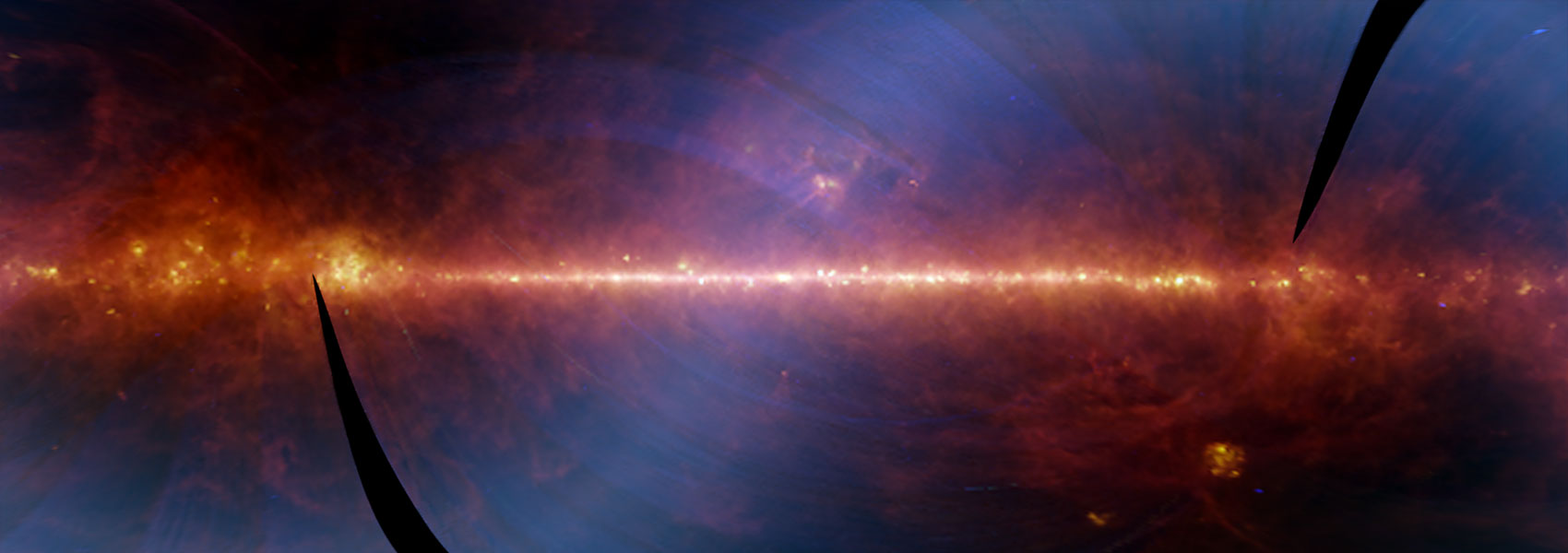January
2025
•
2025A&A...693A..50N
Authors
•
Napolitano, L.
•
Castellano, M.
•
Pentericci, L.
•
Arrabal Haro, P.
•
Fontana, A.
•
Treu, T.
•
Bergamini, P.
•
Calabrò, A.
•
Mascia, S.
•
Morishita, T.
•
Roberts-Borsani, G.
•
Santini, P.
•
Vanzella, E.
•
Vulcani, B.
•
Zakharova, D.
•
Bakx, T.
•
Dickinson, M.
•
Grillo, C.
•
Leethochawalit, N.
•
Llerena, M.
•
Merlin, E.
•
Paris, D.
•
Rojas-Ruiz, S.
•
Rosati, P.
•
Wang, X.
•
Yoon, I.
•
Zavala, J.
Abstract
•
We present the JWST/NIRSpec PRISM follow-up of candidate galaxies at z ≃ 9–11 selected from deep JWST/NIRCam photometry in GLASS-JWST Early Release Science data. We spectroscopically confirm six sources with secure redshifts at z = 9.52–10.43, each showing multiple emission lines. An additional object is likely at z ≃ 10.66, based on its Lyα-break and a single emission feature, while one source is a lower-redshift interloper. The sample includes the first JWST-detected candidate at z ∼ 10, GHZ1/GLASS-z10, which we confirm at z = 9.875, and the X-ray detected active galactic nucleus (AGN) GHZ9 at z = 10.145. Three objects, including GHZ9, have EW(C III]λ1908) > 20 Å and occupy a region compatible with AGN emission in the EW(CIII]) vs CIV/CIII] diagram. The spectroscopic sample confirms a high abundance of galaxies at z > 9. We measure a number density of z ∼ 10 galaxies in the GLASS-JWST ERS field that is a factor of > 3 higher than other JWST-based estimates at demagnified rest-frame magnitudes of ‑21 ≤ MUV ≤ ‑19. We find that the positions of these galaxies in redshift and angular space are not consistent with all of them being part of a single progenitor of present-day galaxy clusters. The high density of objects in the GLASS region can be explained either by clustering on large scales or by a superposition of different forming structures of which we observe only the brightest members. By considering all the spectroscopic z ∼ 10 sources in the Abell-2744 field, we identify two potential galaxy proto-clusters centered around GHZ9 and JD1, with relative separations between their members of ≃1–2 pMpc. The potential AGN nature of three of the sources in our sample lends support to a scenario in which the high abundance of bright sources determined by JWST surveys at cosmic dawn may be affected by AGN contribution to their UV luminosity.
Links




